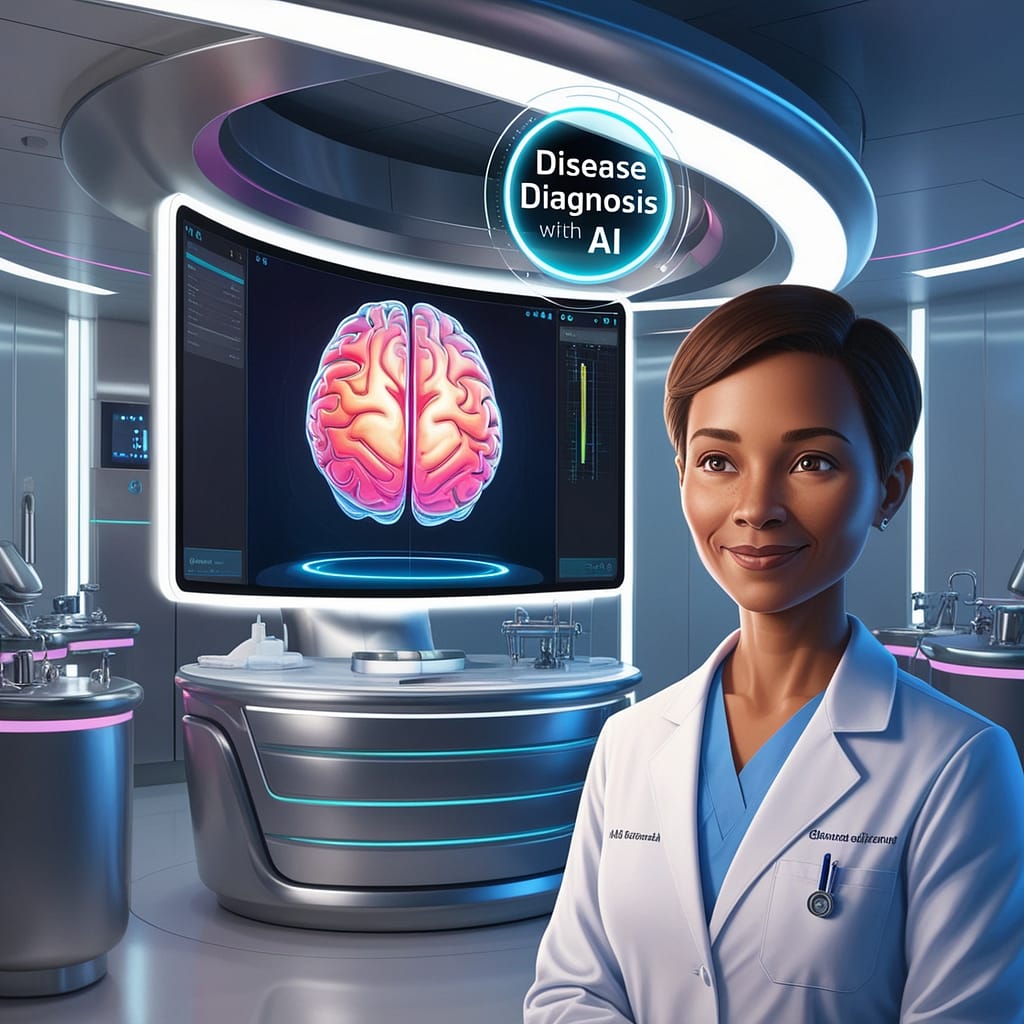Artificial intelligence (AI) is transforming various sectors, and healthcare is no exception. One of the most significant advancements has been in disease diagnosis. By leveraging AI technologies, medical professionals can enhance diagnostic accuracy, speed up disease detection, and ultimately improve patient outcomes. Let’s explore how AI is revolutionizing disease diagnosis and the factors that facilitate this transformation.
1. AI-Powered Imaging Analysis
AI algorithms excel in interpreting vast amounts of visual data, making them particularly effective in medical imaging. Technologies like convolutional neural networks (CNNs) enable AI systems to analyze images from X-rays, MRIs, and CT scans. For instance, AI can identify early signs of cancers, detect fractures, or highlight abnormalities. Studies have shown that AI-based diagnostic tools can achieve accuracy levels comparable to or even surpassing human radiologists in certain cases. 🌟
2. Predictive Analytics for Early Diagnosis
AI systems can analyze patient data to identify patterns that may indicate the onset of diseases. By integrating data from electronic health records (EHRs), lab results, and even genetic information, machine learning algorithms can predict risks and suggest early intervention strategies. For example, AI is used to predict the likelihood of developing chronic conditions, such as diabetes or heart disease, allowing for timely preventive measures. 📊
3. Natural Language Processing (NLP)
Natural Language Processing, a subset of AI, is effectively used in analyzing unstructured clinical notes and patient communications. NLP algorithms can extract valuable insights from text-based data, identifying symptoms, medical history, and potential conditions. This enhances clinical decision-making by providing healthcare professionals with a comprehensive view of a patient’s health status. 📝
4. Wearable Technology Integration
Wearable devices equipped with AI capabilities are becoming increasingly prevalent. These devices continuously monitor vital signs such as heart rate, glucose levels, and activity patterns. AI algorithms analyze the collected data to detect anomalies that may suggest health issues, enabling early diagnosis and personalized health recommendations. ⌚️
5. Telemedicine and Remote Diagnosis
AI has also played a crucial role in expanding telemedicine services. Virtual health platforms utilize AI to assess symptoms based on patient inputs and provide potential diagnoses or recommendations for further action. This capability has been especially vital during the COVID-19 pandemic, allowing for remote consultations while minimizing infection risks. 💻
6. Challenges and Ethical Considerations
While the advantages of AI in disease diagnosis are promising, several challenges persist. Issues related to data privacy and security must be addressed to gain patients’ trust. Moreover, AI algorithms can inherit biases from the data they are trained on, potentially leading to health disparities. It’s crucial that healthcare providers implement these technologies ethically and responsibly. ⚖️
7. The Future of AI in Disease Diagnosis
The future of AI in disease diagnosis looks promising. Ongoing advances in deep learning and data processing will likely lead to even more accurate and efficient diagnostic tools. Collaborative efforts between AI developers and healthcare professionals are essential to create user-friendly applications that integrate seamlessly into clinical workflows.
Conclusion
Artificial intelligence is reshaping the landscape of disease diagnosis, offering new tools that enhance accuracy and efficiency. As technology continues to evolve, its integration into healthcare systems will undoubtedly lead to better patient outcomes and more personalized care. Addressing challenges cautiously and ethically will be key to maximizing the benefits of AI in the medical field. 🌐🤖
By harnessing the power of AI, the healthcare industry is not just diagnosing diseases but also moving towards a future where diseases can be detected earlier and more effectively than ever before.



